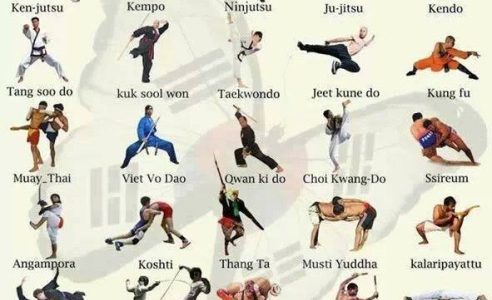Trick Differences Between Typical Martial Arts And Modern Combat Sports: A Comprehensive Analysis
Trick Differences Between Typical Martial Arts And Modern Combat Sports: A Comprehensive Analysis
Blog Article
Team Writer-Camp Haagensen
When you consider martial arts, do you lean more towards the conventional methods or the contemporary combat sporting activities? Each course provides one-of-a-kind benefits and experiences, shaped by their ideologies and training methods. Standard martial arts stress personal development and technique, while modern-day fight sporting activities focus on competitors and efficiency. Comprehending these distinctions can lead you in picking the appropriate approach for your journey. Yet exactly how do these differences show up in training and ideology?
The Ideology and Background Behind Conventional Martial arts
While lots of people associate martial arts with physical battle, the philosophy and history behind traditional martial arts run much deeper. You'll locate that these techniques emphasize personal development, technique, and regard.
Originating from ancient practices, conventional martial arts were frequently developed for Self-Defense and spiritual development. They personify concepts such as balance, consistency, and self-constraint, assisting practitioners beyond simple combating skills.
As you educate, you'll not only discover techniques however likewise gain understandings right into the culture and values that shaped these arts. The rituals and customs, frequently passed down with generations, promote a feeling of neighborhood and belonging.
The Competitive Nature of Modern Fight Sports
Modern combat sporting activities have transformed the landscape of martial arts into a highly affordable arena, where professional athletes face off in an examination of skill, method, and endurance.
You'll see that competitions are often arranged with stringent rules and regulations, guaranteeing fair game and safety. These events attract big target markets, sustaining the excitement and intensity of matchups.
Athletes educate carefully, not just for physical prowess however also for mental toughness, recognizing that every detail counts in the ring. The adrenaline rush throughout competitors is palpable, as competitors press their limits to declare victory.
Followers value the athleticism and creativity entailed, making modern-day combat sports a thrilling spectacle that remains to progress and mesmerize lovers around the world.
Training Techniques and Methods: A Relative Analysis
The competitive atmosphere of contemporary battle sporting activities demands innovative training techniques that vary considerably from traditional martial arts.
In modern training, you'll concentrate on particular strategies, sparring, and conditioning, commonly making use of drills that replicate actual battle circumstances. https://www.slashfilm.com/1015836/the-new-karate-kid-movie-wont-be-connected-to-cobra-kai/ 'll see a focus on quantifiable performance and regular competition to evaluate your abilities.
On the other hand, typical martial arts focus on forms, katas, and thoughtful mentors, typically highlighting discipline and respect over competition.
Training is normally much less intense and might involve recurring practice rather than real-time sparring.
While both strategies develop ability and health and fitness, contemporary battle sports offer a more dynamic and versatile training environment, preparing you for prompt obstacles in the ring or cage.
Select the path that aligns with your goals and passions.
Final thought
In choosing in between standard martial arts and contemporary battle sports, it actually comes down to what you value a lot of. If you're searching for personal development, discipline, and a feeling of community, typical arts could be your finest fit. However if martial arts gyms near me flourish on competition and real-time challenges, contemporary battle sports could be the way to go. Inevitably, both paths use one-of-a-kind advantages, so it's everything about straightening your training with your individual objectives and interests.
